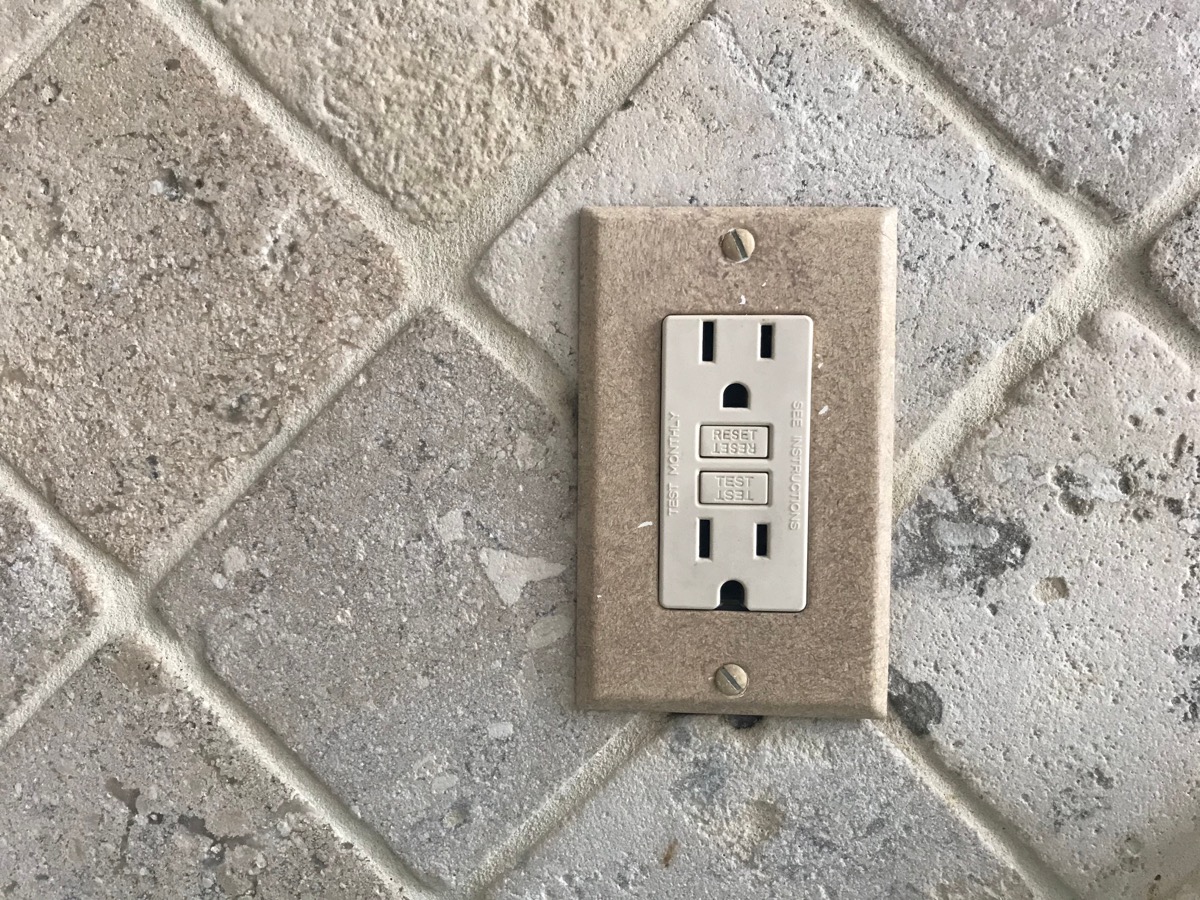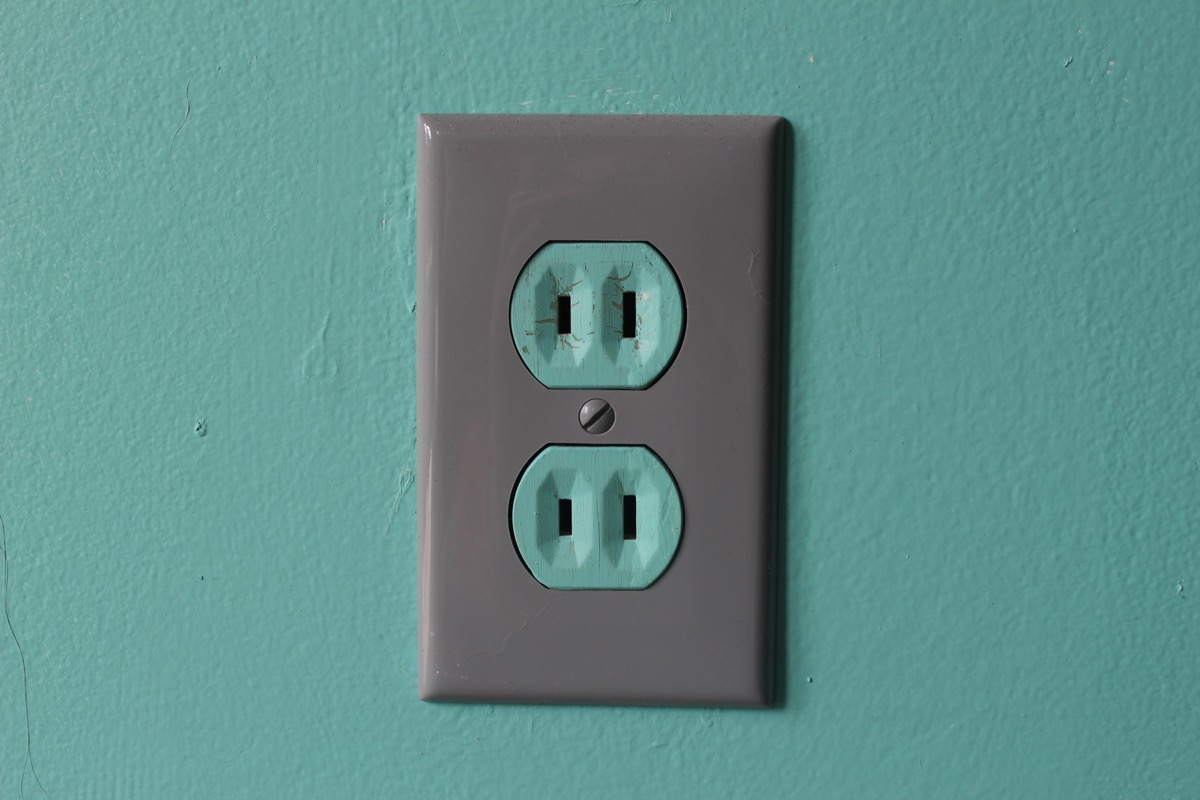If You See This in Your Bathroom, Call an Electrician Immediately

When you think about remodeling your bathroom, you’ve probably considered replacing tile, installing nicer fixtures, or finally upgrading to that soaker tub you’ve always dreamed of. However, there are surprising safety risks in your bathroom that you’d be wise to fix even sooner—and if you don’t, you could be putting yourself in harm’s way. Read on to discover the surefire signs you need to call an electrician to your house now.
RELATED: If You See This in Your Basement, You’re at Risk for a Fire, Experts Say.
1
Pendant lighting

While those hanging pendant lights may look charming in your kitchen, in your bathroom, they could be a serious safety risk.
“You should always have your ceiling lights enclosed as opposed to fittings that hang down. If you do have to have a fixture that is not enclosed, it should be well out of reach of someone using a shower or bath who may be wet from using these utilities,” says electrical technician Peter Keohane of JKS Electrical Solutions.
When in contact with wet skin, these fixtures can cause electric shocks, and non-moisture rated fixtures in damp environments may pose a fire risk. In fact, according to the National Fire Protection Association, 6 percent of fires involving lamps, bulbs, or lighting occur in bathrooms.
2
Regular light switches

You may give little consideration to the type of light switch in your bathroom, but if you don’t have a watertight switch in your space, you could jeopardizing your safety.
“Everyday light switches are another hazard due to wet hands and damp that builds in a bathroom over time,” explains Keohane.
When wet hands come into contact with live wires, you’re at risk for a serious electrical shock. If you don’t have a switch outside your bathroom to control your lights, “ceiling mounted pull cords are the safest option by far,” says Keohane.
For the latest home safety news delivered straight to your inbox, sign up for our daily newsletter!
3
Outlets next to the bath or shower

It may be convenient to have multiple outlets in your bathroom, but if you have one too close to your tub or shower, it’s time to call an electrician immediately.
“There should be no other electrical outlets other than near the sink basin. We don’t want someone plugging in a space heater or radio, or anything in a bathroom. The only outlets where you plug in devices should be at the one specifically GFCI protected and located away from the shower and bathtub,” explains Ben Kolo, owner of Mr. Electric of Central Iowa, a Neighborly company. Kolo notes that the only exceptions to this rule are when you have a tub or shower that requires electricity to power its jets or a heated floor that requires a nearby outlet.
4
Non-GFCI outlets

Ground fault circuit interrupter (GFCI) outlets are designed to help protect against electric shocks, and bathrooms are required to have at least one, according to the National Electric Code.
However, Kolo says that many homes don’t have the appropriate GFCIs installed in bathrooms, thus presenting a serious risk. “If you have an older house with no GFCIs, and you have too much moisture around the outlet, or if you have water on your hands, there is a real shock risk to the person. This is a deadly shock risk,” Kolo explains. However, electricians can quickly replace existing outlets with ones that are up to code, thus offering you protection.
5
Bugs near your outlets

If you notice bugs coming out from behind your outlets, don’t just call an exterminator—call an electrician, too.
“Bugs are attracted to moist areas, as it gives them a dedicated water source, which makes bathrooms a prime environment for a pest infestation,” explains Ed Spicer, CEO of Pest Strategies. “An infestation in your outlet is dangerous because insects create waste and can be electrocuted. The waste can cause corrosion of the outlets, and the buildup of carcasses is fuel for an electrical fire.”
RELATED: If You See This Bug, You Need to Vacuum It Up Immediately, Experts Say.